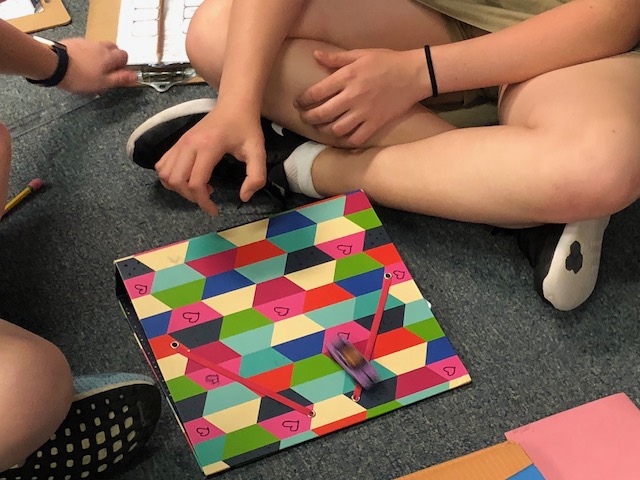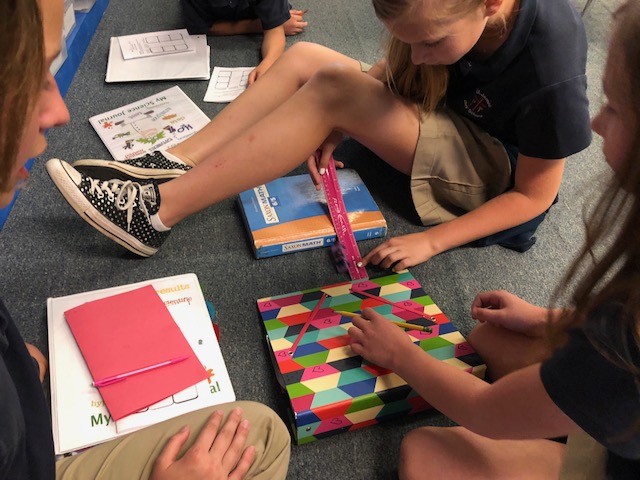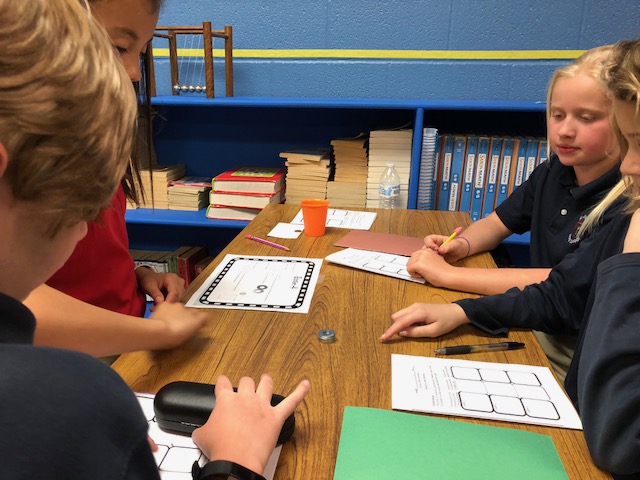Newton's Laws In Daily Life
As a completion to our study of force and motion, 5th graders "played with" Newton's three Laws of Motion in a set of stations. Each station featured either a written set of everyday scenarios or a set of everyday objects, which students tested to determine which of the three laws operated when these objects are used. We looked at everything from a toy car riding down a "ramp" (a binder) to spinning two kinds of eggs-- raw and hard-boiled to a flinging an index card with a penny on top of it. The variety of stations required students to put on their thinking caps and play with the objects to decide which law applied. Was a chair being moved with a stack of books on it demonstrating the first law, that an object at rest stays at rest until acted upon by an unbalanced force? Or, did second law--that force equals mass times acceleration--apply? You could argue both; however, when you begin to remove books from the stack and observe that the chair is easier to push, then the second law clearly applies.
Newton's laws are important foundations of physics, and any child can memorize them by reading them over and over. However, the only way truly to understand how these laws work is to investigate them in an interactive manner. I found that moving around the room and physically handling and testing objects helped students to gain a deeper comprehension of the three laws, their differences, and how sometimes they can work together in various situations. Moreover, who doesn't want to flick coins and play with toy cars?





